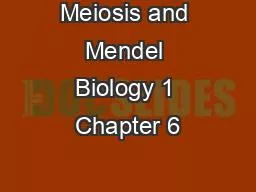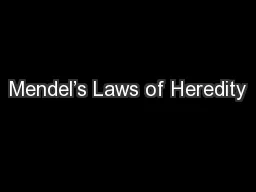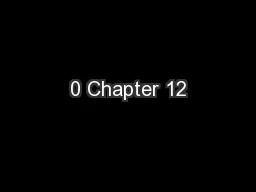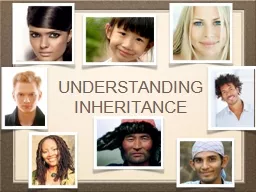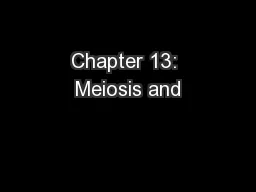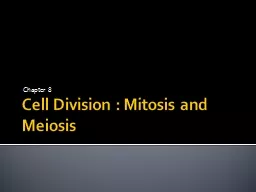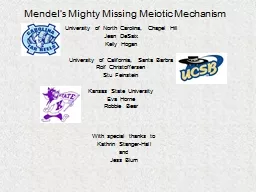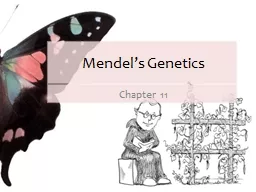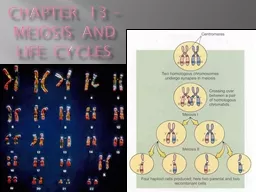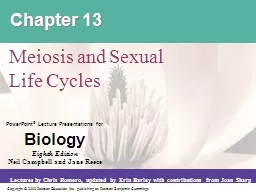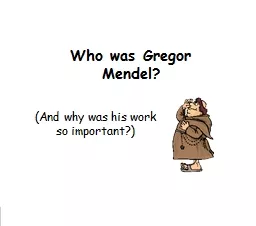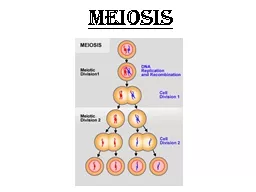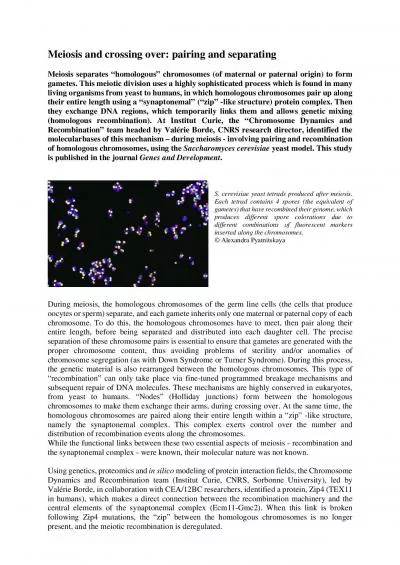PPT-Meiosis and Mendel Biology 1 Chapter 6
Author : discoverfe | Published Date : 2020-06-23
61 Chromosomes and Meiosis Cells can be divided into 2 major groups Somatic body most of body tissue and organs Germ found in reproductive organs develop into gametes
Presentation Embed Code
Download Presentation
Download Presentation The PPT/PDF document "Meiosis and Mendel Biology 1 Chapter 6" is the property of its rightful owner. Permission is granted to download and print the materials on this website for personal, non-commercial use only, and to display it on your personal computer provided you do not modify the materials and that you retain all copyright notices contained in the materials. By downloading content from our website, you accept the terms of this agreement.
Meiosis and Mendel Biology 1 Chapter 6: Transcript
Download Rules Of Document
"Meiosis and Mendel Biology 1 Chapter 6"The content belongs to its owner. You may download and print it for personal use, without modification, and keep all copyright notices. By downloading, you agree to these terms.
Related Documents

